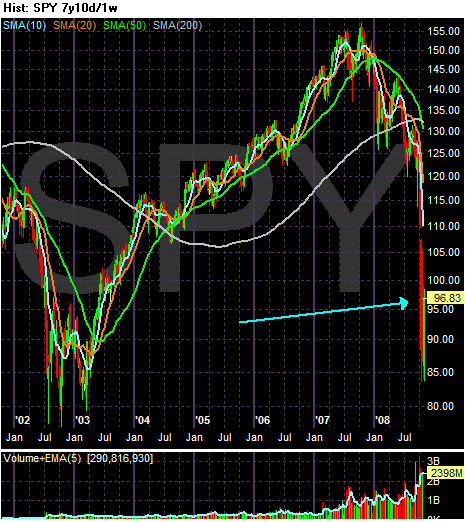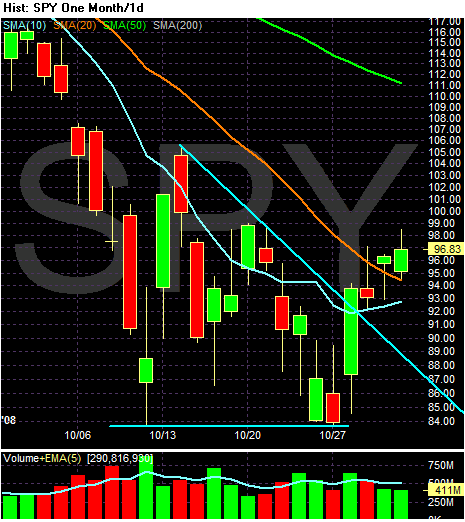Sarge on top of a big pile of laundry

Kate backseat driving

Scoobey inspecting her kingdom

Ford Motor Co posted a deeper-than-expected $2.98 billion quarterly operating loss on Friday and told investors it would take aggressive actions to further cut costs as it faces a severe slump in demand.
Weak demand for autos is being felt around the world, driving down shares of No. 1 automaker Toyota Motor Corp after it slashed its profit forecast for the year.
Ford warned investors it is burning through cash quickly and sources said Chrysler LLC is doing the same, as they struggled to survive the deepening global financial crisis.
Ford Motor Co., with U.S. sales shredded by the worst financial crisis since the Great Depression, posted a third-quarter operating loss of $2.98 billion and said it used up $7.7 billion in cash.
The per-share operating loss of $1.31 was wider than the 93-cent average of 10 analyst estimates compiled by Bloomberg. Ford said it would trim more salaried jobs by January, deepen its fourth-quarter production cuts and shrink capital spending by as much as 17 percent.
Revenue plunged 22 percent to $32.1 billion, forcing Ford to triple its consumption of cash compared with the second quarter. Cash, cash equivalents and marketable securities for Ford's automotive business plummeted 29 percent to $18.9 billion on Sept. 30, the Dearborn, Michigan-based company said today.
``Cash burn is the No. 1 issue,'' Rebecca Lindland, an IHS Global Insight Inc. analyst, said in a Bloomberg Television interview. ``We associate cash burn with General Motors. It has not always been a problem with Ford. That is potentially a new problem.''
Nonfarm payroll employment fell by 240,000 in October, and the unemployment rate rose from 6.1 to 6.5 percent, the Bureau of Labor Statistics of the U.S. Department of Labor reported today. October's drop in payroll employment followed declines of 127,000 in August and 284,000 in September, as revised. Employment has fallen by 1.2 million in the first 10 months of 2008; over half of the decrease has occurred in the past 3 months. In October, job losses continued in manufacturing, construction, and several service-providing industries. Health care and mining continued to add jobs.



U.S. retailers largely reported October sales declines in a month that saw consumer confidence plunge amid the nation's financial crisis and spreading layoffs.
The sector's weak performance was no surprise, but nonetheless sets the scene for what is looms as a dismal holiday-shopping season.
Numerous retailers reported sharp declines, led by teen retailer Abercrombie & Fitch Co., which saw a 20% drop in sales at stores open at least a year. Upscale retailers like Abercrombie have been feeling the pain more than lower-end stores, which are showing the best overall strength.
October same-store sales fell 0.9 percent, the first drop in seven months, and 4.2 percent excluding Wal-Mart, the International Council of Shopping Centers said. Excluding the effect of the shifting Easter holiday, it's the first decline since at least 2000, Retail Metrics said.
Many retailers anticipated the economic downturn and have done a ``very good job'' of reducing the amount of merchandise on shelves, even as sales decline, Perkins said. Cost-cutting and lower inventory helped retailers including Gap maintain their profit forecasts today.





The Treasury Department laid out near-term borrowing plans Wednesday, saying it expects to tap financial markets for $550 billion in the final three months of 2008 and another $368 billion in the first three months of next year by issuing Treasury securities with a wide range of maturities.
Economists project that total government borrowing could pass $1.5 trillion in the fiscal year, which ends next September, pushing up the government's total debt burden by more than 25% in one year.
.....
The sharp rise poses a potential dilemma for Mr. Obama's ambitious agenda. Few economists believe the Treasury will be constrained in the next year in its ability to manage its rising borrowing needs or in advancing another fiscal stimulus program. But in the long run, rising government debt could make it harder for Mr. Obama to pursue new spending and tax-cut programs aggressively.
"I don't think that anything on the stimulus end will be constrained by these deficits," said David Greenlaw, a Morgan Stanley economist. "But if you're talking about health-care reform and some of these longer-term programs, there is some constraint there."




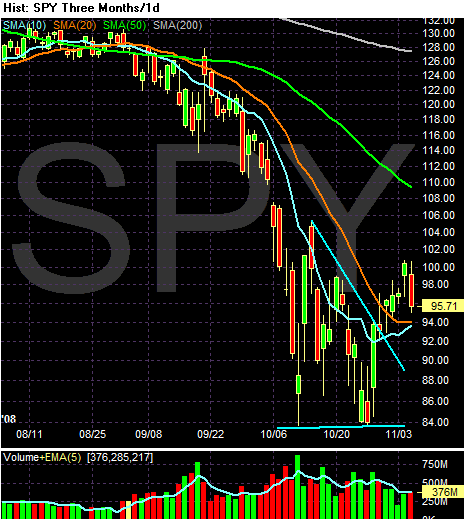


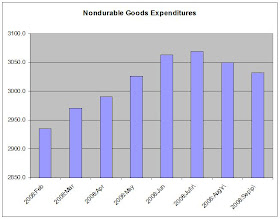


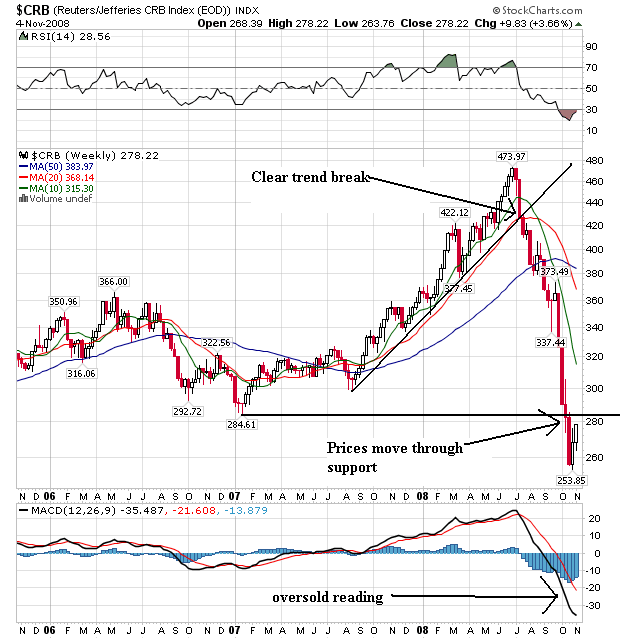
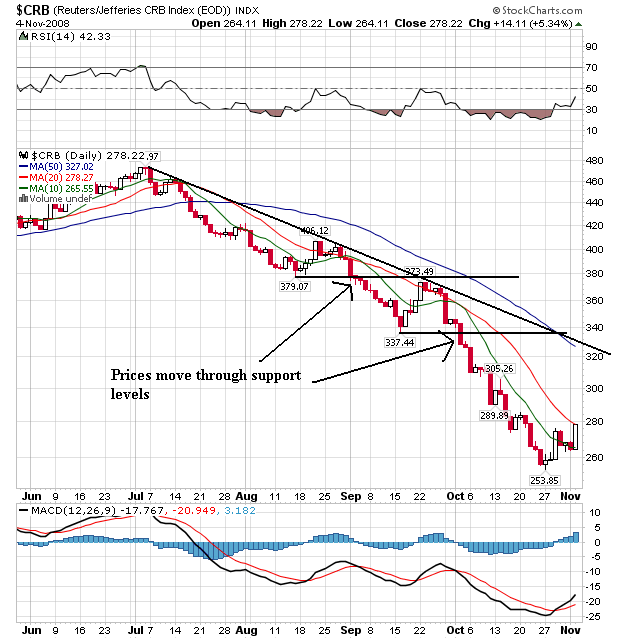
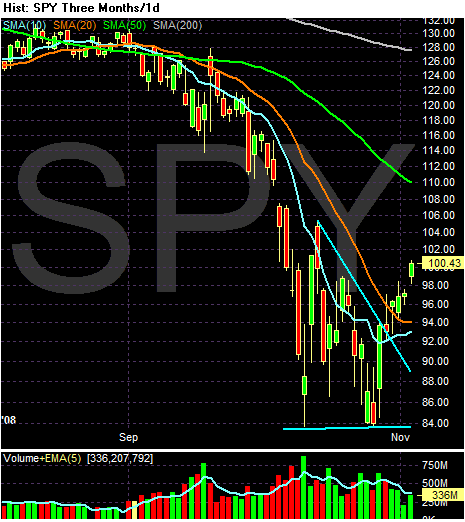
A record plunge in commodities may signal the U.S. is headed for the longest recession since 1981, just after Ronald Reagan became president and the economy began a 16-month slump.
Industrial raw materials measured by the Journal of Commerce fell at an annual rate of as much as 56 percent last week, the most since 1949 and worse than the declines before every recession since then. Crude oil, copper and wheat tumbled more than 50 percent from records this year as the U.S. economy declined in the third quarter by the most since 2001.
``The industrial sector, which was helping to keep the recession relatively mild, has completely given way and now we need to be prepared for a much more severe recession,'' said Lakshman Achuthan, managing director at the Economic Cycle Research Institute in New York, which compiles the Journal of Commerce data. ``It's at least going to look something like what we saw in the early 1980s, but it could be worse.''
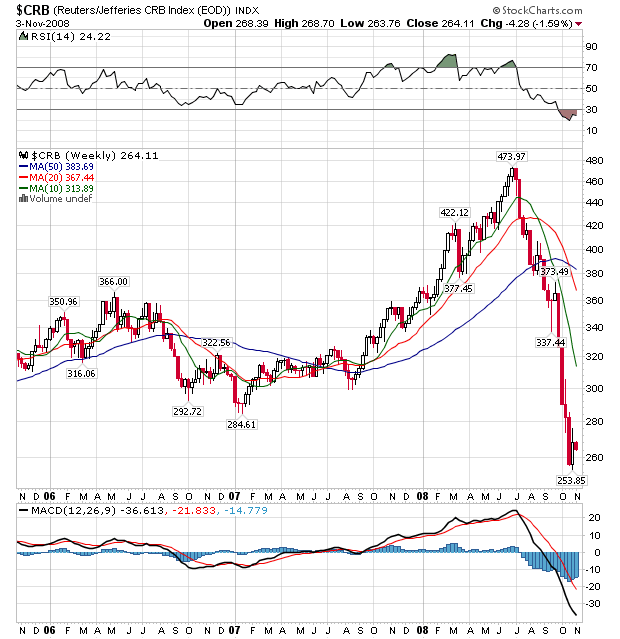
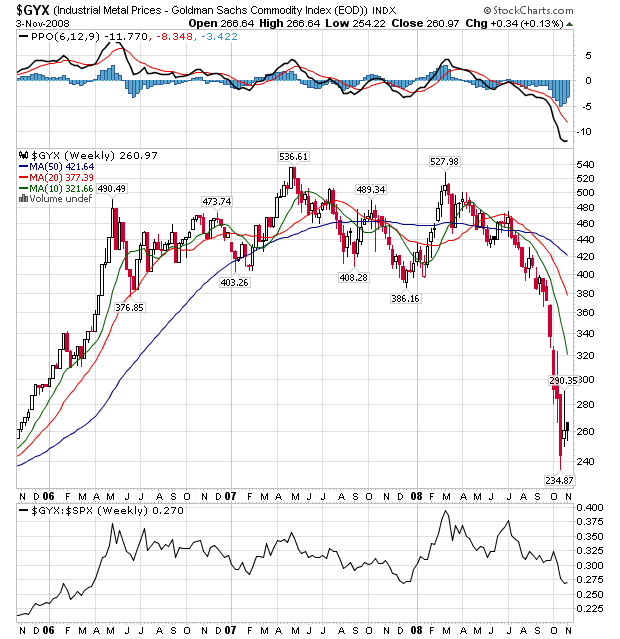
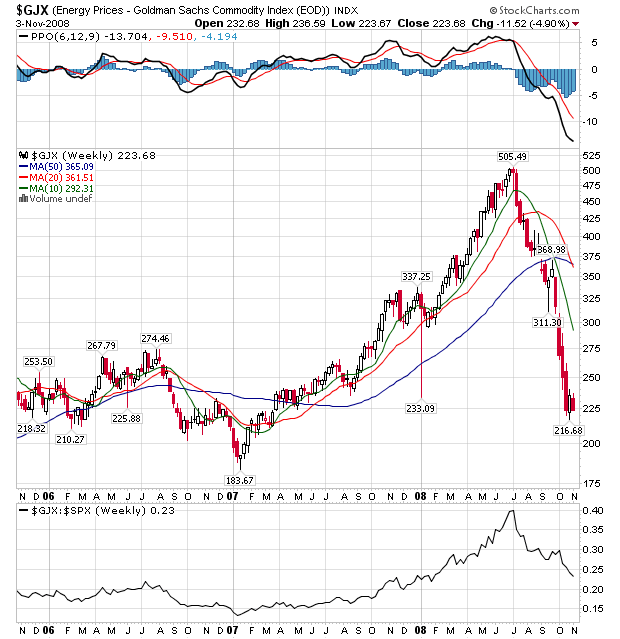
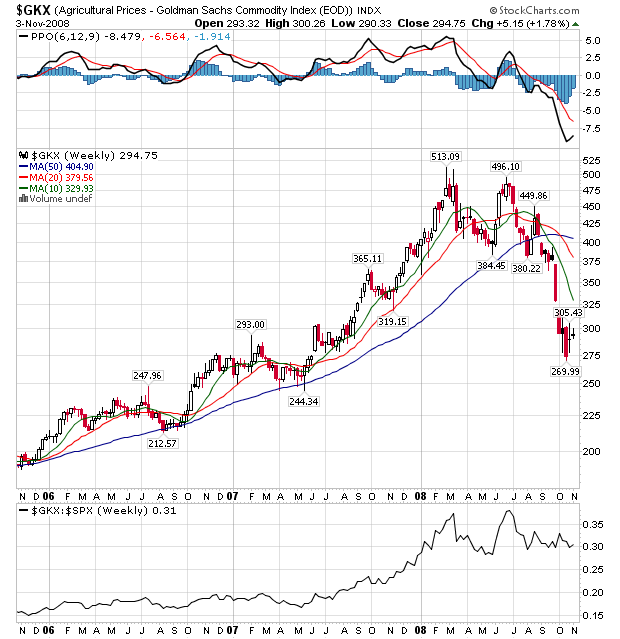
The nation's manufacturers continued to cut back production sharply in October for the second straight month, the Institute for Supply Management reported Monday. The ISM index fell to 38.9% in October from 43.5% in September. This is the lowest level since September 1982. The size of the decline was unexpected.
"In my 27 years, I have never seen a month like this," said GM sales chief Mark LaNeve. "It was like somebody turned off the lights in the month of October."
.....
October's declines were led by GM, where sales fell 45% to 166,744 vehicles. The company was hurt when its financing arm, GMAC LLC, began offering loans only to customers with top credit scores. In many areas of the country, only a third or so of all customers would qualify for loans, Mr. DiGiovanni said.
.....
Ford reported its sales fell 30% to 132,248 cars and light trucks, Toyota Motor Corp.'s fell 23% to 152,101 and Honda Motor Co.'s dropped 28% to 85,864. For Toyota, fleet sales comprise less than 10% of total sales.
Lost income from motor vehicles and parts subtracted 64 basis points from the 2008:Q2 GDP growth rate (quoted at an annual rate), and took another 80 basis points away from quarter 3 (see BEA Table 1.5.2). Today's numbers suggest that the fourth quarter is going to be significantly worse than that.
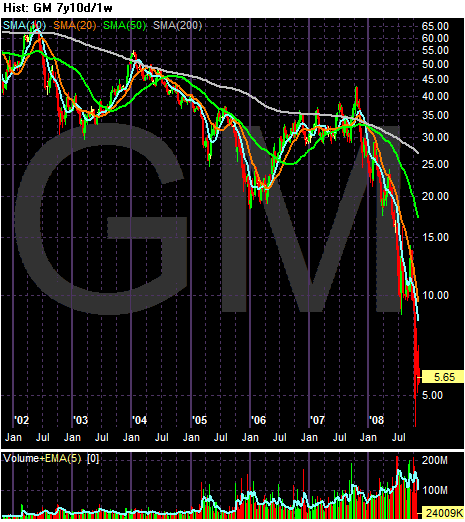
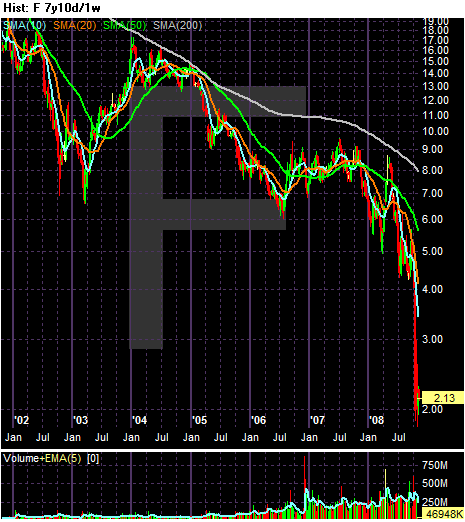
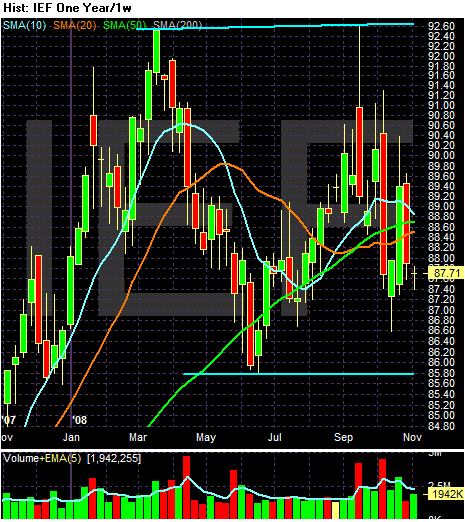


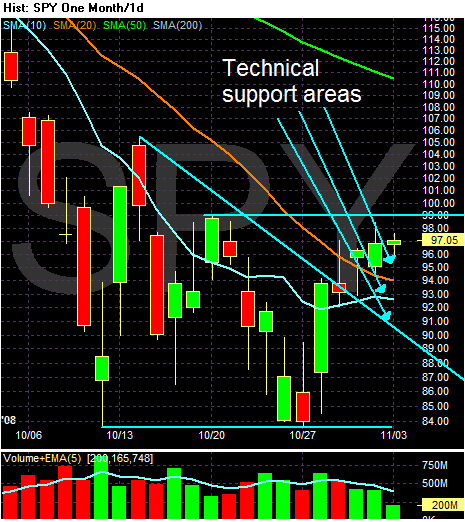
The Institute for Supply Management's factory index fell to 38.9 from 43.5 in September; 50 is the dividing line between expansion and contraction. The Commerce Department said separately that construction spending fell for the eighth time in 10 months in September.
Today's report may add to pressure for further interest-rate cuts and an additional federal package of tax and spending measures. The figures also showed the weakest level for U.S. export orders in the two decades the ISM has kept the data, a sign of slowdowns in Europe and Asia.


In a recent research note, you wrote: "I remain bullish and wrong." Is that still your sentiment?
Yes, it is. I was just looking at an interview I did with Barron's in December 1980, and I was called a super bull. And then we got prematurely bearish in 1998, and people started calling me a perma-bear. Right now, though, I am not a super bull, but I am a very convinced and optimistic bull.
What underscores your case?
Certainly, the intrinsic value of stocks. In terms of our valuation model, it's the most positive we have seen since 1984. We look at 28 different factors, including price-to-earnings and price-to-sales, and they are quite decidedly positive. Because we look at normalized earnings, we smooth them out over a business cycle. We have always done it that way, and we are at about 12 times earnings now.
Is that on forward earnings?
No. What we do is we take the last 4½ years of historical earnings, and then we project forward only six months. Then we divide the whole thing by 20, or the number of quarters. We have found over the years that it is almost imperative that you do that -- that is, smoothing out the business cycle to get the underlying level of earnings.
How does that 12 times P/E ratio compare to other periods?
Looking back 55 years, we are in the 15th percentile, well into the bottom quartile, and this is where markets very often have bottomed out. So on a valuation basis, this is a really cheap market. At these levels, we are really down in bull-market territory. From here, on a one-year basis -- and this goes back to 1926 -- the market has been up about 18%, on average, in the next year.
Does this particular downturn remind you of any other economic slumps in particular?
This recession is probably similar to the one that occurred around 1981. The average recession since World War II has been about 11 months. The longest was 16 months, and we've had two of those. And I think this one is going to last at least 16 months and probably longer than that, maybe 20 months.
This recession started in the fourth quarter of last year, so you are looking at a recession through the fourth quarter of 2009. But you have got to remember that the stock market is a lead economic indicator, and historically it has turned up about 60% of the way through a recession. Applying that timetable suggests that this market should be bottoming sometime this month, and that is very, very possible.
